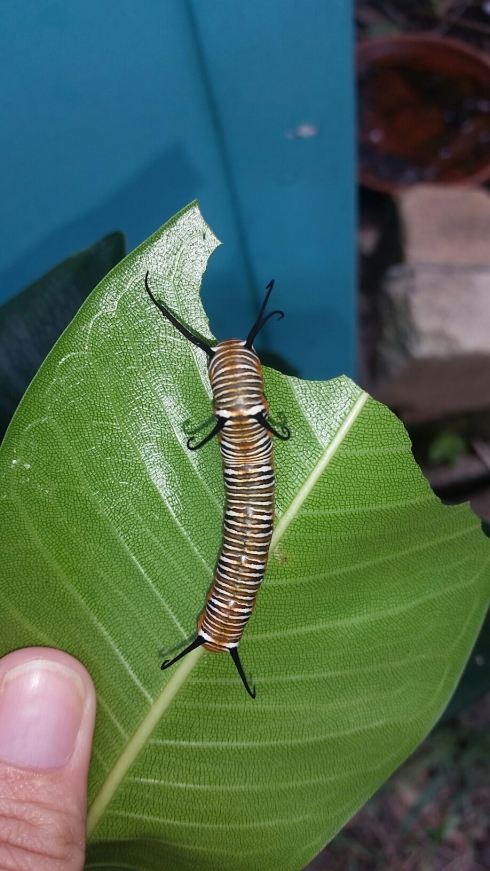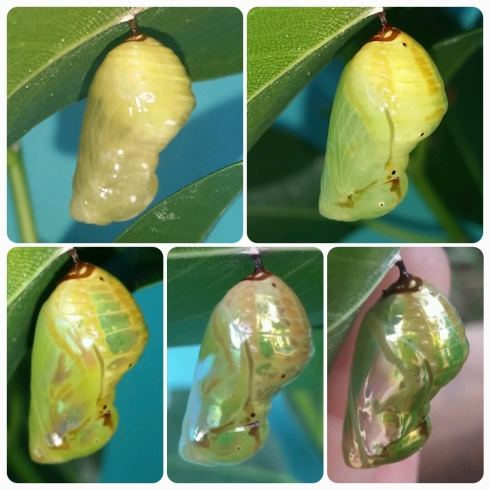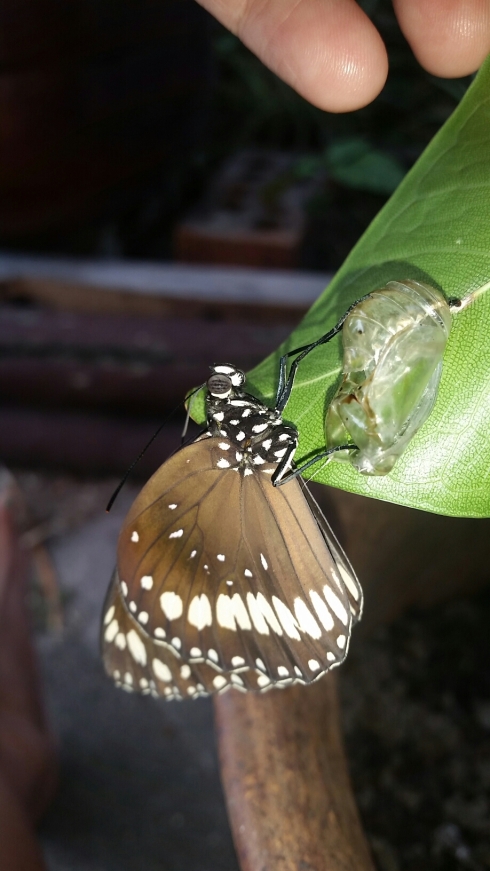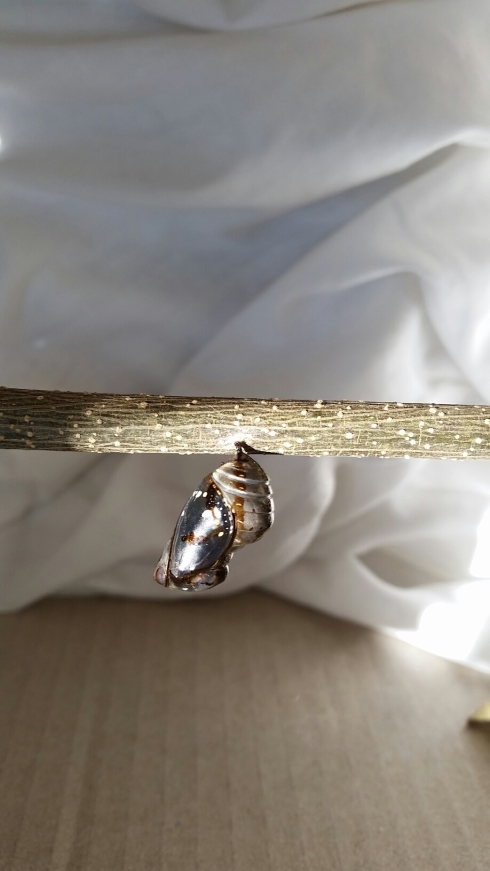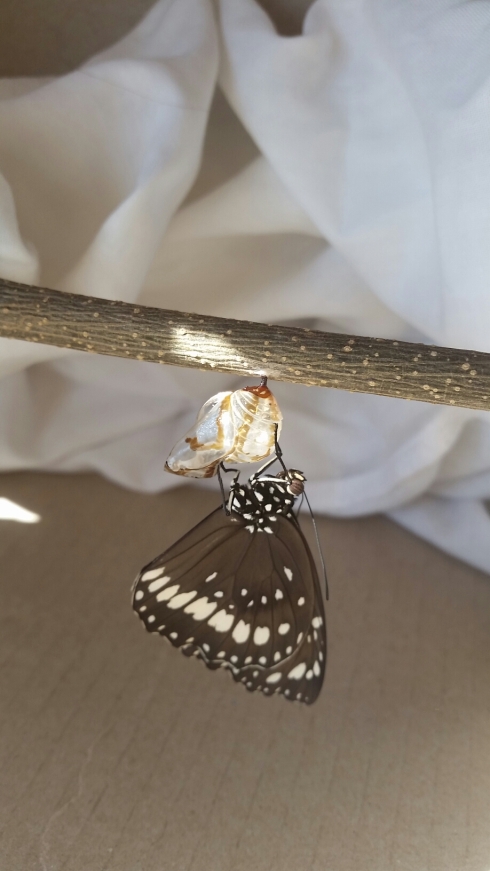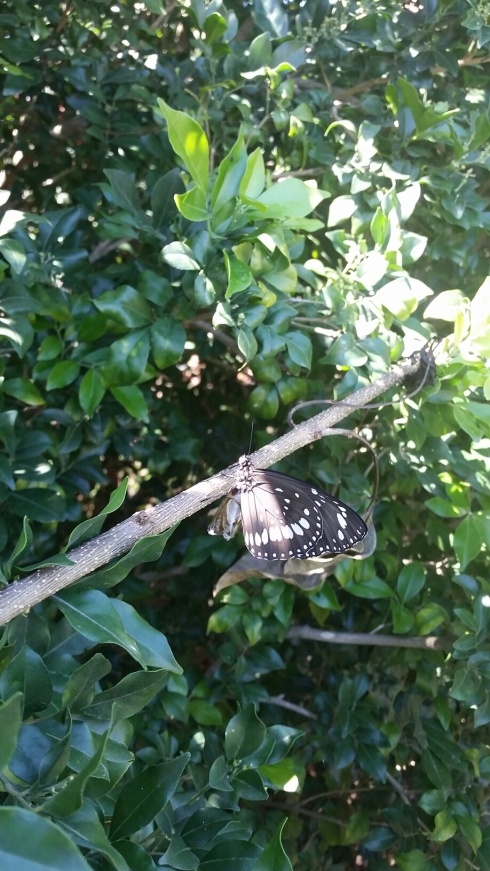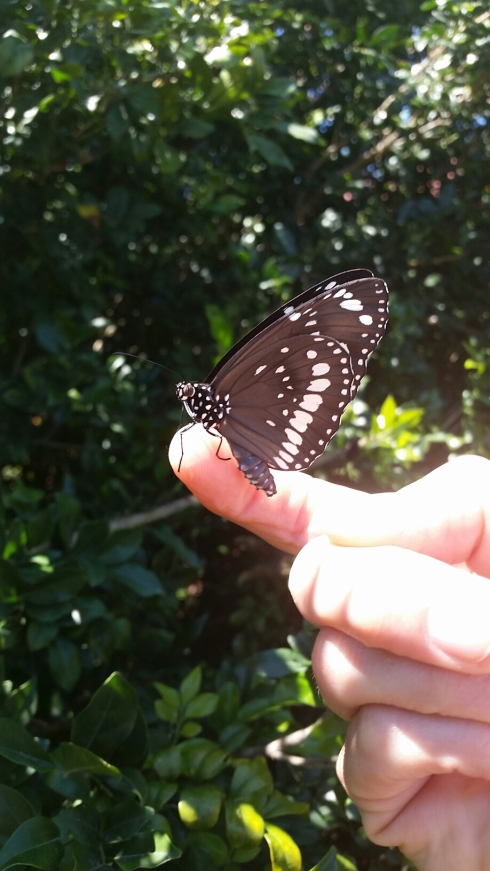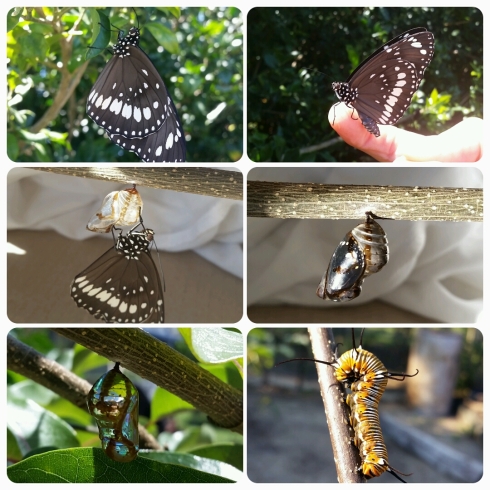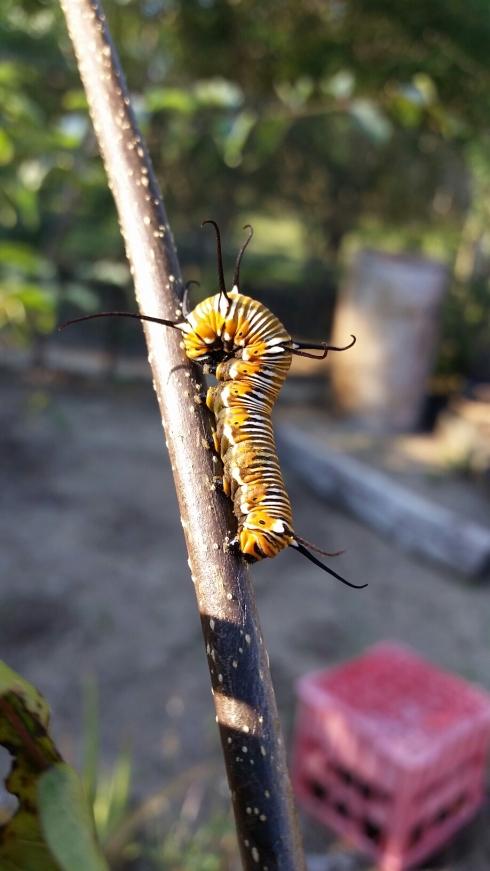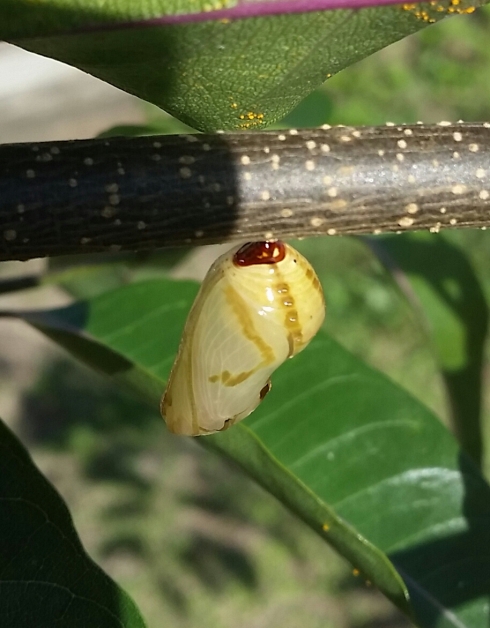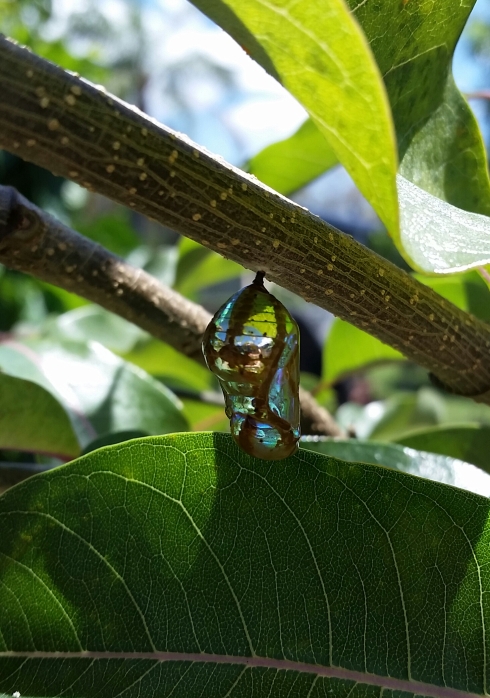One day on my normal insect-finding walks, I noticed a butterfly around the pool that kept landing on the yellow swim noodle over and over. There were many other coloured noodles there but it definitely was attracted to the yellow one. First, it landed so often I was able to get a good photo of it.
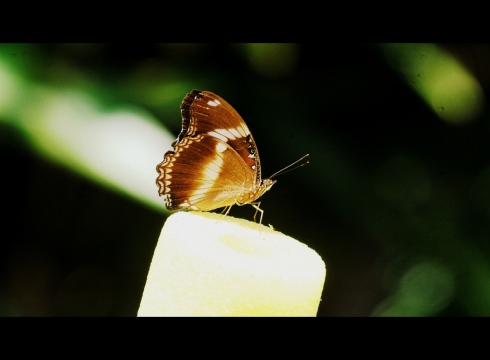
That’s the butterfly sitting on top of the swim noodle.
Next, I decided to try to see if I could get it to land on me or near me for a better shot by using the colour yellow. I ran and got a yellow sweatshirt and although I was successful in getting it to land on the arm of it, when I would bring the camera up for hopefully a great close-up, the lens scared it away.
So, what does an over-enthusiastic wannabe do then? Get a banana.
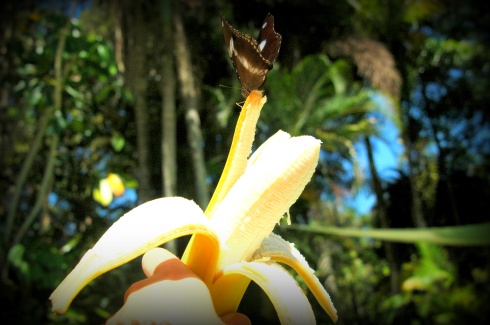
And of course from this I realized that butterflies actually seemed to be attracted to a certain colour. So, I got on the internet to find out why.
I learned that although butterflies have only average eyesight, unlike most other insects, they do see colour including colours in the ultraviolet spectrum. There are markings on certain flowers that are ultraviolet, therefore invisible to the human eyes, but can be seen by the butterfly. Butterflies are also aware of when the nectar of a certain plant may no longer be in production by the change of colour say, from yellow to red.
So, how do you attract butterflies to your home? (That is, if you’re short on bananas.)
1. Grow plants that attract them. Plants with brightly coloured flowers, like red, orange, yellow, pink and purple work best.
2. Use native plants. There isn’t a high success rate for the offspring when eggs are laid on non-native plants.
3. Find out what butterflies are in your area and make them a priority.
4. Use a butterfly-attracting bait. (see below)
INGREDIENTS
1 pound sugar 1 or 2 cans stale beer
3 mashed overripe banana
1 cup of molasses or syrup
1 cup of fruit juice
Mix all ingredients well and paint on trees, fence posts, rocks, or stumps–or simply soak a sponge in the mixture and hang from a tree-limb.
Read more: http://www.care2.com/greenliving/butterfly-bait-how-to-formula.html#ixzz2W0DLqjxu
Tags: butterflies, butterflies and color, butterflies and colour, butterfly attracting recipe, entomology, entomology blog, recipe for attracting butterflies
